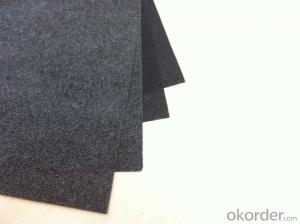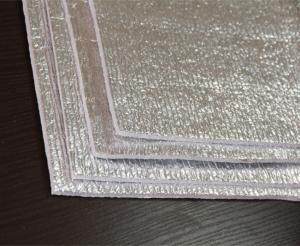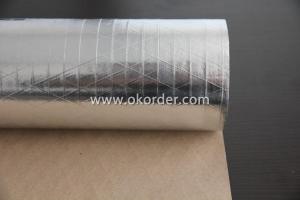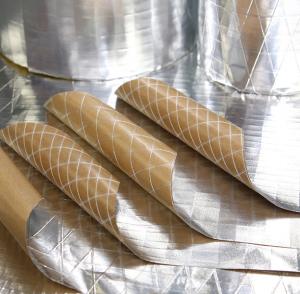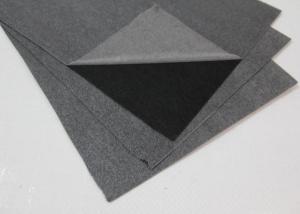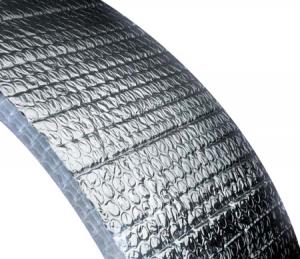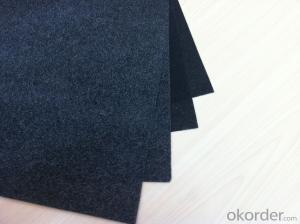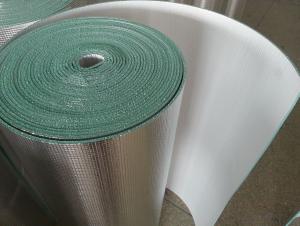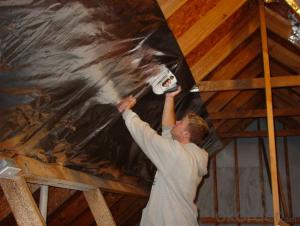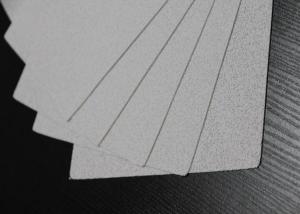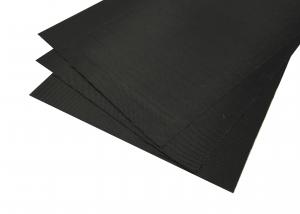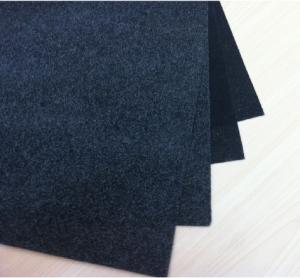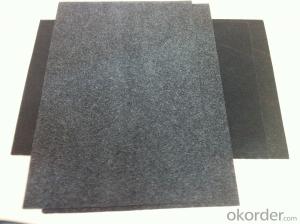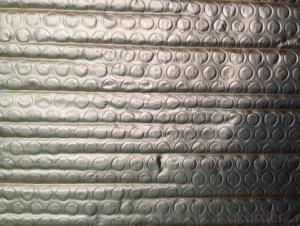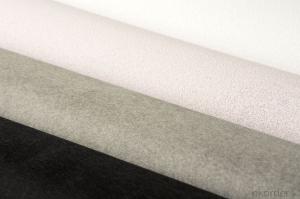60GSM E CLASS BLACK FIBERGLASS TISSUE-60E
- Loading Port:
- Shanghai
- Payment Terms:
- TT OR LC
- Min Order Qty:
- 500 m²
- Supply Capability:
- 100000 m²/month
OKorder Service Pledge
OKorder Financial Service
You Might Also Like
Black Spraying Coating Fiberglass Tissue
Fiberglass Tissue is a kind of facing, which is made of by the white fiberglass tissue, and special production process.
Our black tissue are mainly used as facing for glass wool insulation, rockwool, mineral wool etc. Also fiberglass tissue facing is used under roof decking, under attic rafters, over existing attic thermal insulation, in floors, walls and crawl spaces, and in industrial and commercial buildings
Advantage of Blace Spraying Coating Fiberglass Tissue
Light weight
• High manufacturing accuracy
• High strength
• Small inertia resistance
• Strong heat dissipation ability
• Good visual effect
• High reflective insulation
• Heat resistant, water proof, stable at high temperature;
• Environmentally friendly, no smell and not-toxic;
• Smooth and clear surface;
Fiberglass Tissue Application
building reflective heat, cold and hot water pipe insulation;
refrigerator partition, central air conditioning, refrigerator and household appliances insulation;
insulation, sound-absorbing, noise reduction and moisture-proof insulation in the car, train, refrigerator car, laboratory and other industries;
special product packaging and refrigerated packing and so on
Packing of Blace Spraying Coating Fiberglass Tissue
1. Waterproof paper then PVC shrinking Film
2. Water-Proof film only
3. Woven cloth
4. Kraft paper or Water Proof Film then Metal/wooden pallet
5. (Also as your request. )
Specification of Fiberglass Tissue
PROPERTIES | UNIT | VALUE | TEST METHOD |
Basic weight | gsm | 105 | ASTM D646 |
Tensile strength: M. D. X. D. | N/25mm | 140 60 | ASTM D828 |
Burst strength | N | 40 | ASTM D774 |
Reflectivity of foil surface | % | 95 | ---------- |
Temp. Resistance | -29°C 66°C | No Delamination No Delamination | ASTM C1263 |
Water vapor permeance | ng/N.s | 1.15 | ASTM E-96 |
Pictures of Black Spraying Coating Fiberglass Tissue
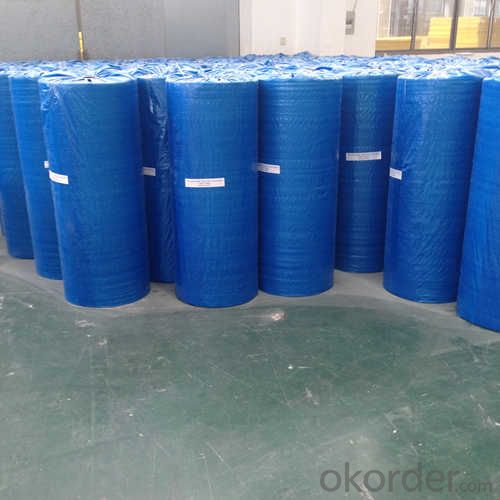
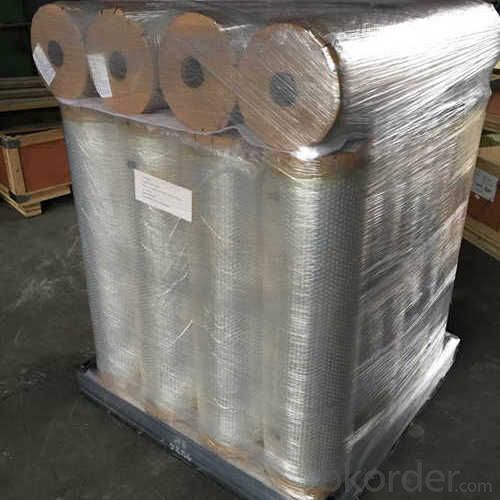

FAQ
We have organized several common questions for our clients,may help you sincerely:
1. What is the storage condition?
The Aluminum Foil Facing should be stored at room temperature and kept from wet and heat source.
2. How to guarantee the quality of the products?
We have established the international advanced quality management system,every link from raw material to final product we have strict quality test;We resolutely put an end to unqualified products flowing into the market. At the same time, we will provide necessary follow-up service assurance.
3. How long can we receive the product after purchase?
In the purchase of product within four working days, we will arrange the factory delivery as soon as possible. The specific time of receiving is related to the state and position of customers. Commonly 7 to 10 working days can be served.
- Q:Is fiberglass facing fire-resistant?
- Indeed, fiberglass possesses fire-resistant qualities. Its composition comprises a blend of glass fibers and resin, resulting in exceptional resistance to heat. Fiberglass exhibits the ability to endure elevated temperatures without undergoing melting or emitting harmful fumes. It finds frequent application in scenarios where fire resistance holds paramount importance, including insulation, protective garments, and building materials. Nonetheless, it is crucial to acknowledge that the fire-resistance attributes of fiberglass may be influenced by the substances it is coupled with, such as adhesives or coatings.
- Q:How does fiberglass facing contribute to energy efficiency in buildings?
- Fiberglass facing contributes to energy efficiency in buildings by acting as a thermal insulator. It helps to reduce heat transfer through the walls, ceilings, and floors of a building, leading to improved energy conservation and lower utility bills. Additionally, fiberglass facing can also provide an effective barrier against air infiltration, reducing drafts and improving indoor air quality.
- Q:Can fiberglass facing be used in high-temperature applications?
- No, fiberglass facing cannot be used in high-temperature applications. Fiberglass is a type of reinforced plastic material that is known for its excellent thermal insulation properties and resistance to corrosion. However, it has a low melting point and is not suitable for use in high-temperature environments. When exposed to high temperatures, fiberglass can melt, warp, or degrade, compromising its structural integrity and insulation properties. Therefore, it is important to choose alternative materials specifically designed for high-temperature applications, such as ceramic fiber or metal facing, to ensure safety and optimal performance.
- Q:Can fiberglass facing be painted or customized?
- Yes, fiberglass facing can be painted or customized.
- Q:How does fiberglass facing improve insulation?
- Fiberglass facing improves insulation by providing an additional layer of protection to the insulation material. The facing acts as a barrier, preventing air and moisture from entering or escaping the insulation. This helps to maintain the desired temperature inside the insulated space, as well as preventing the growth of mold or mildew. Additionally, the facing enhances the durability and strength of the insulation, making it more resistant to damage and ensuring its longevity. It also enhances the fire resistance of the insulation, providing an added layer of safety. Overall, the fiberglass facing improves insulation by enhancing its thermal performance, moisture resistance, durability, and safety.
- Q:Does fiberglass facing require regular maintenance?
- No, fiberglass facing does not require regular maintenance.
- Q:Can fiberglass facing be recycled?
- Certainly, it is feasible to recycle fiberglass facing. Fiberglass, composed of delicate glass fibers, is a reinforced plastic. Typically, the facing consists of a thin layer of fiberglass. Recycling fiberglass can be more intricate compared to other materials due to its distinctive properties. Nonetheless, recycling it remains possible. The recycling procedure entails shredding or grinding the fiberglass material into small fragments, which can then be utilized in the production of new items. However, it is vital to acknowledge that the recycling infrastructure for fiberglass might not be as widespread or easily accessible as it is for other materials. Therefore, it is advisable to consult local recycling facilities or specialized fiberglass recycling companies to ascertain the specific recycling options obtainable in your vicinity.
- Q:Fiberglass Felt Polyester Powder Adhesive Details
- Glass fiber is an excellent performance of inorganic non-metallic materials, a wide range of advantages is good insulation, heat resistance, good corrosion resistance, high mechanical strength, but the disadvantage is brittle, poor wear resistance.
- Q:What is the lifespan of fiberglass facing?
- The lifespan of fiberglass facing can vary depending on various factors such as quality, maintenance, and environmental conditions. However, on average, fiberglass facing can last anywhere from 20 to 50 years.
- Q:Are there different types of fiberglass facing available?
- Indeed, a variety of fiberglass facings are accessible. Fiberglass facing serves numerous purposes in insulation, construction, and the automotive industry. It is obtainable in diverse structures and configurations tailored to specific needs and requirements. One prevalent form of fiberglass facing is woven fiberglass fabric. This fabric is crafted by interweaving delicate strands of fiberglass, resulting in a robust and long-lasting material. It is commonly utilized in applications that demand exceptional strength, resistance to heat, and resistance to chemicals. Another variation is the chopped strand mat (CSM), which comprises short strands of fiberglass randomly dispersed and held together by a binder. CSM is frequently employed in scenarios where easy handling and malleability hold significance, such as in boat construction and automotive component manufacturing. Fiberglass facing can also be procured in the form of non-woven fabrics, which are fabricated by bonding randomly aligned fibers. Non-woven fiberglass fabrics are often used as reinforcement material in roofing, flooring, and insulation applications. Furthermore, fiberglass facing can be obtained as fiberglass sheets or panels. These rigid, pre-formed panels are constructed from fiberglass materials and are commonly employed for insulation purposes in buildings and industrial settings. In conclusion, the assortment of fiberglass facings available grants the capability to select the most appropriate material for specific applications, considering factors like strength, durability, malleability, and ease of handling.
1. Manufacturer Overview |
|
|---|---|
| Location | |
| Year Established | |
| Annual Output Value | |
| Main Markets | |
| Company Certifications | |
2. Manufacturer Certificates |
|
|---|---|
| a) Certification Name | |
| Range | |
| Reference | |
| Validity Period | |
3. Manufacturer Capability |
|
|---|---|
| a)Trade Capacity | |
| Nearest Port | |
| Export Percentage | |
| No.of Employees in Trade Department | |
| Language Spoken: | |
| b)Factory Information | |
| Factory Size: | |
| No. of Production Lines | |
| Contract Manufacturing | |
| Product Price Range | |
Send your message to us
60GSM E CLASS BLACK FIBERGLASS TISSUE-60E
- Loading Port:
- Shanghai
- Payment Terms:
- TT OR LC
- Min Order Qty:
- 500 m²
- Supply Capability:
- 100000 m²/month
OKorder Service Pledge
OKorder Financial Service
Similar products
New products
Hot products
Related keywords
